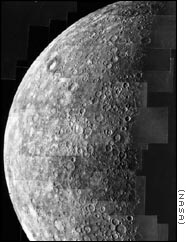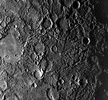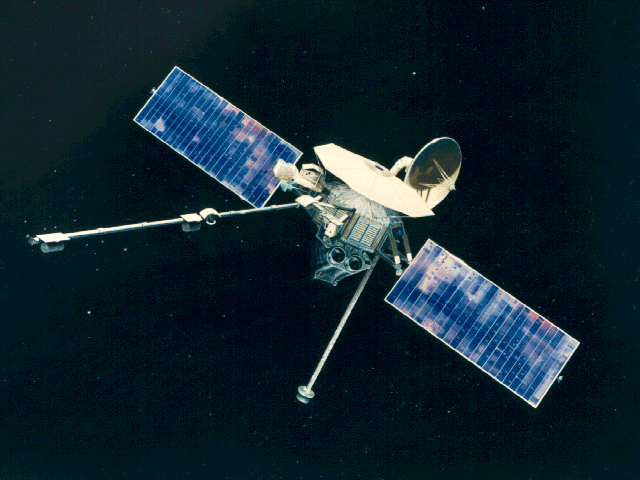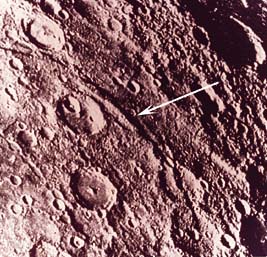 |
Overview, Main
Properties
- Origin of name: In Roman mythology,
the god of commerce, travel and thievery; In Greek mythology
Hermes, the messenger of the Gods (in the evening; Apollo in
the morning); Probably received this name because it moves quickly
across the sky.
- Viewing: Best viewed at dawn
or sunset; Always close to the Sun; Has a full cycle of phases;
Can be seen occasionally transiting the Sun [will do so 14 times
in the 21st century, the first one was in 2003, and then parallax
will give us its distance].
- Size and mass: Radius about
40% of Earth's [Mass about 5.5% of Earth's]; From its mass and
volume we know that its average density is high, almost as high
as the Earth's.
- Motion: Orbit 0.4 au from the
Sun, so 1 Mercury year = 88 days, considerably elliptical; Slow
rotation with period = 59 days = 2/3 year, in resonance with
the orbit [so on Mercury, 1 solar day = 2 years!]. Rotation
axis is perpendicular to orbit.
|









![]()